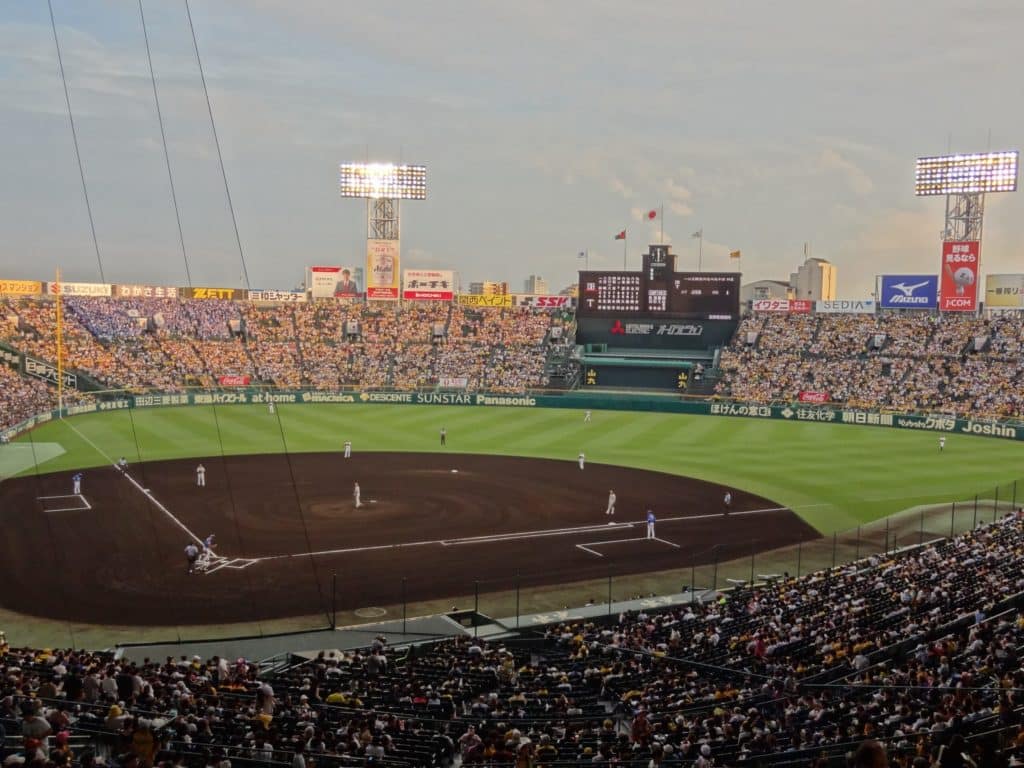
There’s no doubt that baseball is an international game. Whether it’s the foreign talent that shines in Major League Baseball (MLB) or the passionate fan bases across the Pacific in Japan, baseball is a game that transcends borders and language, as nothing compares to heading to the local ballpark to see some action and enjoy a game.
For a true baseball fan, however, sometimes just seeing any game isn’t enough. They want to attend games across the world, find the best leagues and talent to enjoy, and proudly tell their friends how they’ve seen every version of their beloved game that the world has to offer. After all, no better way to broaden your horizons than through baseball.
This list, part of a series detailing the best baseball havens in the world, aims to help the baseball fanatic by offering the best places to catch the game in the primary Asian baseball leagues: the KBO (Korea Baseball Organization), CPBL (Chinese Professional Baseball League, in Taiwan), and of course, NPB (Nippon Professional Baseball, in Japan).
Best Stadium in Korea:
Jamsil Baseball Stadium, Seoul, South Korea
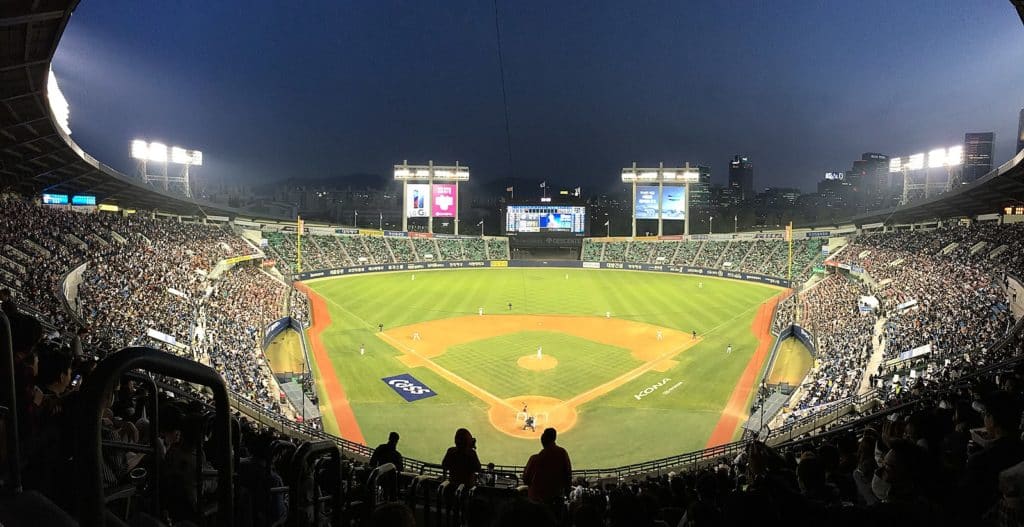
When it comes to catching a game in Korea, there’s no better option for fans than Jamsil. Located in the nation’s capital, this stadium was originally built for the hosting of international baseball between 1980 and 1982, and now plays double hosting duty, as both the LG Twins and Doosan Bears of the KBO League play their home games here. During the season, baseball is played here non-stop, hosting games everyday except Mondays!
Jamsil makes our list because for many baseball fans, it’s the easiest place to catch a game and experience what the KBO has to offer: fantastic fanbases, great life outside of the stadium, and amazing play on the field; the Bears specifically have won 3 of the past 5 Korean Series. What’s more, the ballpark is a historical artifact in Korea, as it also hosted Olympic baseball in 1988; American fans will love to see the place of Jim Abbott’s gold medal heroics!
The stadium is a great sight too, as it features great seating around the park and delicious food to enjoy, especially the fried chicken. Called “chimaek” in Korea, fried chicken is a delicacy enjoyed by thousands in Korea, considered by many to be a “sigh of relief” after a long day of work; today there are over 20,000 fried chicken restaurants in the country. We highly recommend trying it with a draft beer (if you’re of age, of course).
Beyond the features, however, the stadium is just a mecca for baseball, as its hosted postseason play every year for 13 years, and its location in central Seoul provides easy access from subway trains and cars alike. If you’re in Seoul and want the KBO experience, we highly recommend this site!
Daegu Samsung Lions Park, Daegu, South Korea
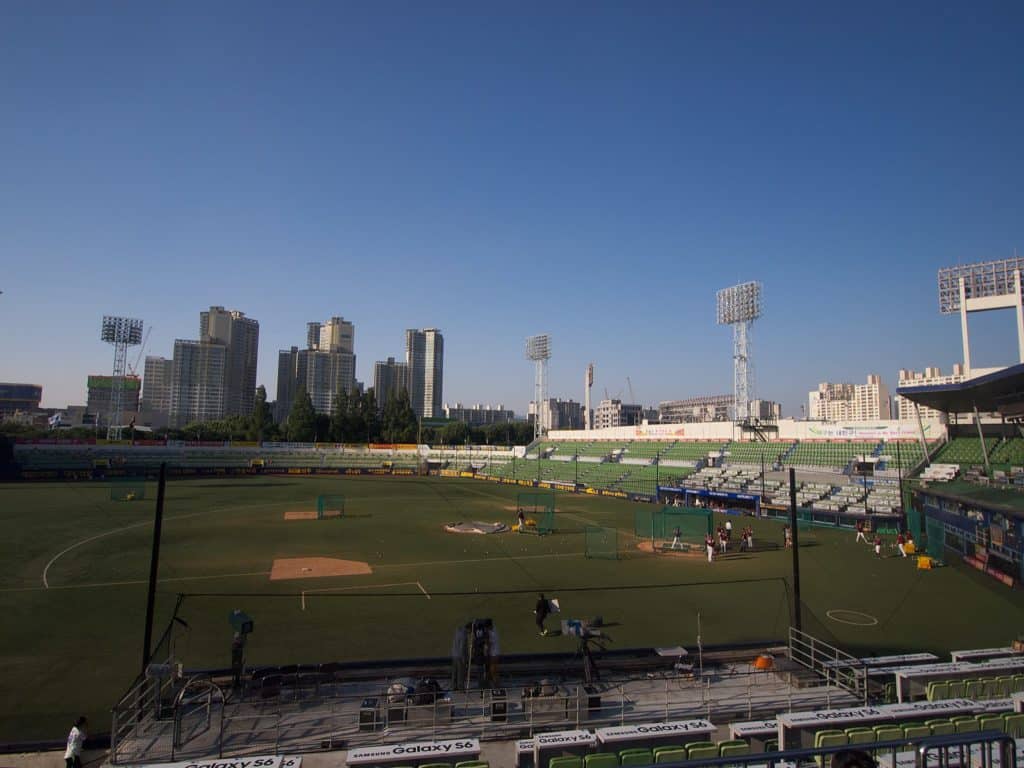
If history isn’t your thing, maybe you want to check out the latest and greatest the KBO has to offer: Lions Park. Built in 2016, the home of the Samsung Lions is filled to the brim with modern features and style that’ll impress even the most old-fashioned of baseball fans.
The park is a haven for everything quirky in baseball. With a perfectly angular playing field, deep foul territory for defense, perfectly symmetrical seating and a reputation for being a “pitcher’s graveyard,” baseball fans will adore watching the Lions smack home runs into the beautiful backdrop against the mountains. For those not interested in the game, the ballpark has plenty of modern acclimations, offering delicious burgers and famous Korean fried chicken, called “chimaek,” around the stadium, as well as plenty of souvenirs.
Although Jamsil remains the easiest to reach and the favorite for many fans visiting, for someone who wants a true, quirky baseball experience, we suggest making the train trip to Daegu; it’s a wonderful place to visit outside of baseball as well!
Best Ballpark in Taiwan:
Taichung Intercontinental Stadium:

The Chinese Professional Baseball League is one of the smallest, yet coolest, leagues in the world. Located entirely on the small island of Taiwan, this tiny league has gained recognition for its play, its dedicated fanbases, and its role in international baseball, hosting multiple tournaments for the World Baseball Classic, Intercontinental Cup and others.
At the forefront of it all is the crown jewel of the CPBL, Taichung Intercontinental Stadium. Hosting the CPBL’s CTBC Brothers, winners of a second-best 7 titles, the 20,000 seat structure is one of the premier places in Taiwan to catch a game, as it was built originally to host more international games. As a result, it features some of the greatest sightlines in the league and fantastic seating around the horn; you can even sit as a group behind home plate!
If you happen to be in town when no international games are playing, the Brothers aren’t a bad gig either, featuring all the CPBL standards: rowdy fans, cheerleaders and drummers, and, of course, great baseball. Outside of the game, however, one can also find activities for the kids around the park like bounce houses, and the merchandise store is almost always open.
If you want to see the best Taiwan has to offer, this is a great place to start.
Xinzhuang Baseball Stadium
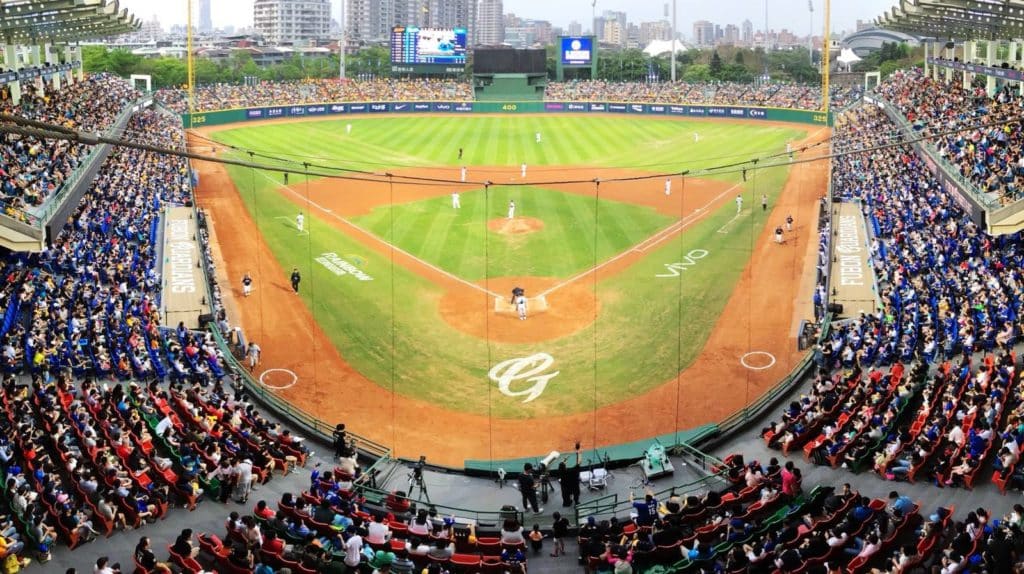
Also on our list is the quirky Xinzhuang Stadium, which, although tiny, features some of the greatest features a stadium can offer.
Although it was originally built with only 7,500 seats, New Taipei City, where the stadium is located, has regularly renovated the ballpark, giving it a fresh feel every few years ago. Now seating 12,500 and hosting the Fubon Guardians, it includes some great features for players and fans alike: a jumbotron, new bleachers, dugouts with retractable roofs and an “invisible” infield net, allowing fans a great opportunity to see the game while staying safe.
A couple fun facts to seal the deal: 1. It’s also a common place for international play, seeing action in 2013 in the World Baseball qualifiers. 2. The retractable rooftops over the dugouts are considered “in play,” meaning if a foul ball bounces off the roof and back into play, a player may make a play on it!
The Guardians aren’t half-bad either, last winning the Taiwan Series in 2016.
Other cool facts about the CPBL:
There are a few stadiums we didn’t mention: Tianmu Stadium and Taoyuan International Baseball Stadium. Tianmu doesn’t get a lot of usage, but its fantastic backdrop with the Young-Ming mountain in the background gets a vote on our list. Taoyuan is also one of the bigger stadiums in the country as it sits 20,000, and features some of the best play in the CPBL: the resident Rakuten Monkeys have won seven titles, including the past three Taiwan Series!
Another fun fact: the CPBL was one of the first major sports leagues to return to play during the COVID-19 pandemic, and received international attention for doing so. For the record: they’ve played a full season, even taking time off for an All-Star game!
Not a bad place to see a game at all.
Best Ballpark in Japan:
Hanshin Koshien: Stadium

There’s so much that could be said about Koshien, but let’s keep it to the basics: this is one of the most important sites in Japan baseball-wise, as it not only hosts the Hanshin Tigers, but also the famous national high school baseball championships.
Built in 1924 to host the championships, the baseball stadium is one of the oldest and most historic stadiums in the world. History aside, however, the fan experience here is unmatched; the Hanshin fans, hungry for another title since 1985, are some of the most passionate in the world, and Koshien sits 50,000 of them every night, ready to cheer their Tigers on.
In addition to the wonderful atmosphere, the stadium is just plain cool. It features the only all-dirt professional baseball infield in the world, and there’s almost nothing more beautiful than watching the sunset over the third-base line. For a baseball fan, it’s almost heaven: Koshien.
Mazda Zoom-Zoom Stadium:

History not your forte? No problem. Come check out one of the greatest baseball cities in the world, with an amazing ballpark to boot.
Mazda Zoom-Zoom Stadium, built in 2009 to become the new home of the Hiroshima Toyo Carp, is home to one of the best atmospheres in Nippon Professional Baseball. The “sea of red” makes a grand appearance at all Carp games, and can make a simple thing like walking to the ballpark a parade full of delicious food and zealous fan-spirit.
Beyond the fans, the stadium is one of the best in NPB. For those more familiar with MLB ballpark, it has many similarities to a modern, retro-classic MLB ballpark. It seats 32,000, and offers wonderful views from every seat in the house. And in addition, the Carp ain’t half-bad either; they’ve won three of the previous five Central League pennants.
For a fantastic fan base and a modern ballpark experience, the Carp is the best ticket in Japan.
Jingu Stadium:
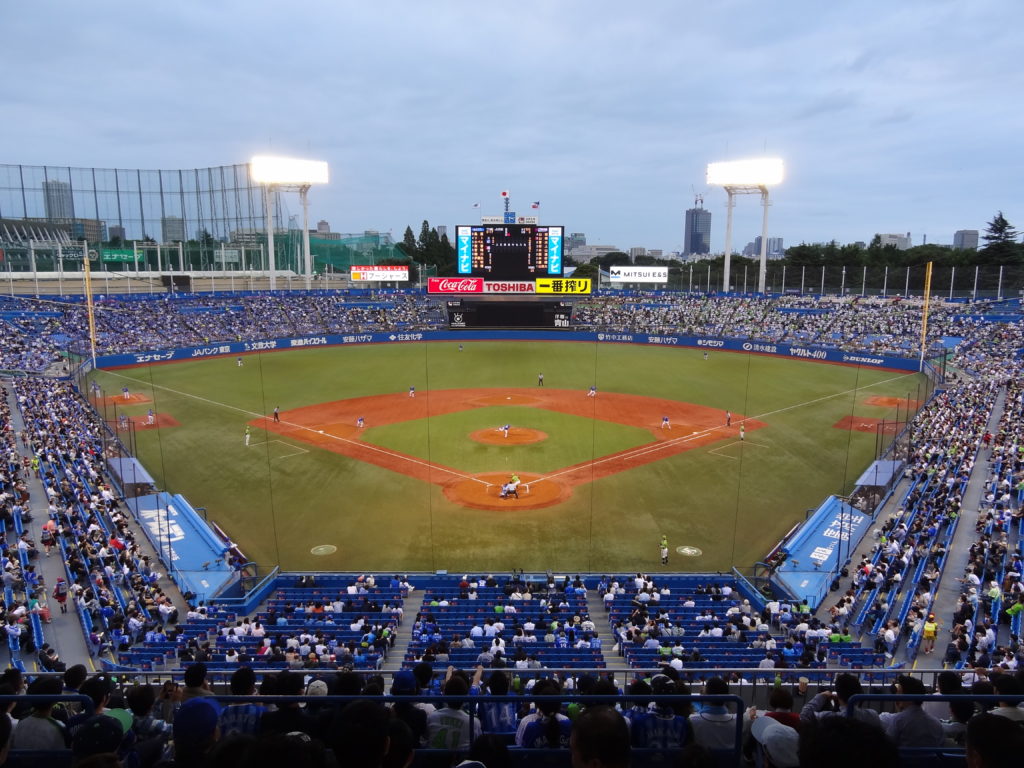
This stadium, one of the oldest in Japan, gets a nod on this list for its role in international play and its impending doom.
Built in 1926, the home of the Yakult Swallows has played host to not only one of the most storied teams in NPB, but also significant events in international baseball history, as Babe Ruth’s 1934 barnstorming tour of Japan played several games in the old stadium. Nowadays, the Swallows feature some of the best play in Japan, and the fans are a sight to behold; the “umbrella dance” is a storied tradition unlike any other.
Unfortunately, time is running out to see this beauty, as it was announced that the stadium will soon be torn down and rebuilt in the same complex to reorganize and introduce a new rugby stadium as well. As a part of one of the best baseball communities in the world, along with its role in history, Jingu Stadium will never be forgotten; if you get the chance to, see this stadium before it’s too late!
To see some of these parks yourself, check out our travel site, japanballtravel.com; for more international baseball talk, check out our website!
1 comment
Koshien is vastly overrated as “stadium.” Historically, yes, but it’s kind of a dump to be blunt and was back in 1985 when I first lived in Japan and still is in 2023. The outside ivy is about the only feature that is quirky and interesting. Honestly, if the Tigers or high school tournaments were not played there, you’d think why did they create a bigger and older Kawasaki Stadium here.